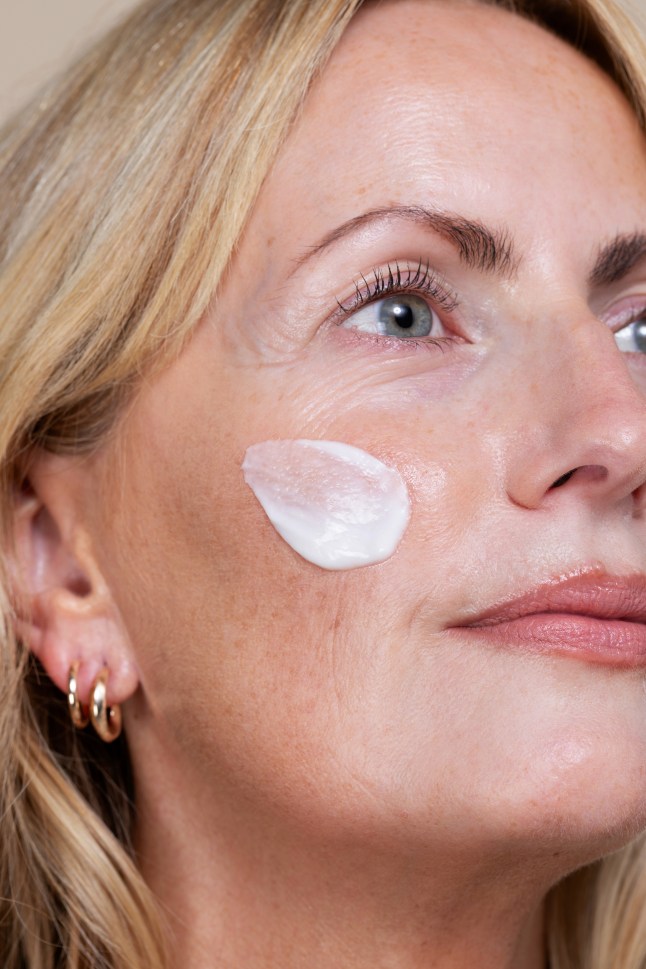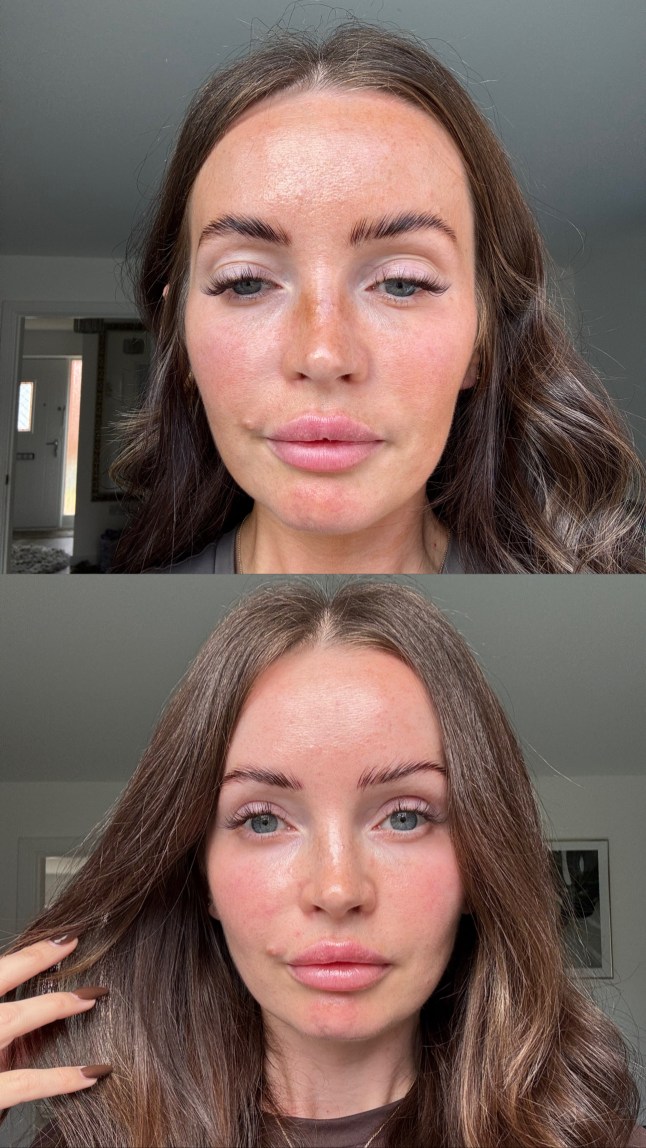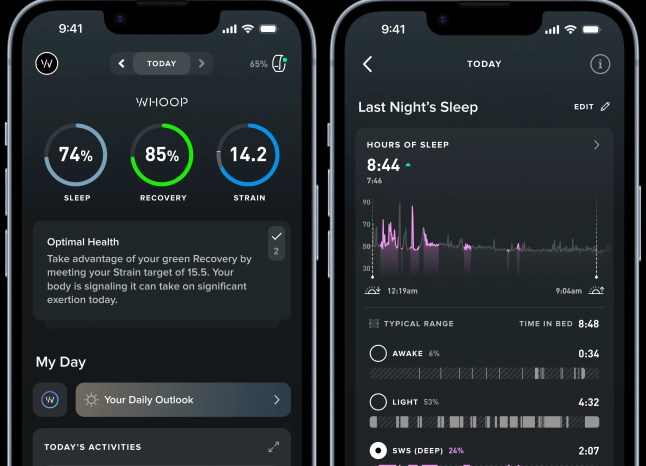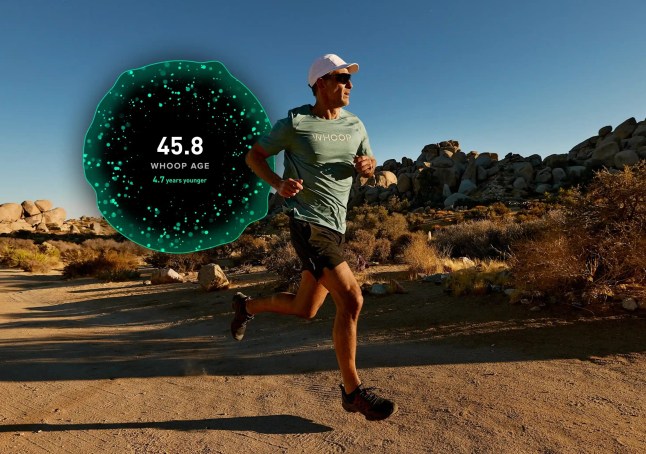21 Nov, 2025 | Admin | No Comments
I visited the North’s biggest M&S with two cafés and mall-style consessions


I’ll confess that M&S is not usually my go-to for the big shop. Instead, I reserve it for what they do best: a picky bits tea, the best small bottles of wine you can drink on a train, and, now I’m in my thirties, the occasional wardrobe upgrade.
However, upon learning that I was now living 10 minutes away from the North’s largest M&S store, located at Cheshire Oaks, I felt it was essential to check it out.
Before you Londoners protest, yes, there is technically a bigger M&S in Marble Arch. However, this northern offering is the largest M&S has ever built from scratch (and besides, plans are currently in motion to redevelop the one in the capital). It also has the lofty title of ‘second biggest M&S in the world’.
As I ventured to the mammoth shop, roughly the size of 11 Olympic swimming pools, I had some questions.
What could such vastness encapsulate? Wardrobes you could find Narnia in? Or just row after row of padded gilets?
As it turns out, it held more than a few surprises. Here’s how I got on.
Getting to M&S Cheshire Oaks
Cheshire Oaks is located off of Stanney Woods Avenue, Goodwood Square, Ellesmere Port (CH65 9GZ).
If you’re driving, it’s very difficult to miss, but it’s located right by the turnoff for The Blue Planet Aquarium, and also very near the Chester Porsche Centre and Audi Garage. Following the signs for the Cheshire Oaks Designer Outlet from any of the nearby major roads should get you close enough.
In terms of public transportation, the nearest train stations are either Chester or Ellesmere Port, both of which require a short bus or taxi ride.
From Chester to Cheshire Oaks, the 1 or X1 bus stops at the outlet, or it costs around £10-£12 in an Uber.
Arriving at M&S Cheshire Oaks

Unlike my visit to the UK’s biggest Tesco, the size of this M&S store really does hit you square in the face — as does the fact that it’s environmentally friendly.
There are nods to the fact that this is M&S’s greenest store everywhere. From small details, such as the ‘welcome to your eco store’ sign and the ‘gabion’ walls, to the small ‘wild meadows’ that encourage insects and wildlife, and the vast ‘green wall’ covered in plants that flanks the two-storey car park.
And as soon as you walk through the doors, the sheer amount of choice on offer sets it apart.

Downstairs, you’ll find Women’s Wear (including Lingerie, Hosiery, and Beauty), while upstairs, it’s Men’s Wear, Kid’s wear, Luggage, and the Home section.
There’s also an enormous beauty hall that would rival your local Boots, with brands including Benefit and Estee Lauder, plus a food hall that’s almost its own supermarket.
The store has a mammouth 148,000 sq ft of selling space, and each section occupied the same floor space I imagine a local M&S store might need by itself, with hundreds of items from M&S ranges like Autograph, Per Una and Goodmove. It took one minute and 35 seconds to do the 132 steps from one side of the store to the other (yes, I timed it).
A ‘shopping mall’ in M&S

M&S claims this branch has the ‘most extensive range of M&S products’, but the store also had so many concessions that it almost felt like its own mall. You’ll also find rails of clothing from White Stuff, Seasalt and Jaeger.
Between the concessions and the M&S stock, the selection was pretty mindblowing.
Without wishing to sound too much like Alan Partridge, one of my biggest gripes is that I can never find shoes in my size — a curse bestowed upon those of us with big feet. Not so at Cheshire Oaks. Size 12s proved abundant.
The home section also featured the M&S x Fired Earth section — a collab that’s apparently available in limited stores across the country. And since my visit, the branch’s TikTok shows a fun selection of Christmas decorations have landed – including baubles shaped like M&S crisps.
Full disclosure: my M&S visit was timed ahead of the arrival of my firstborn, so I had a vested interest in researching M&S’s offerings for babies.
Upstairs at M&S Cheshire Oaks, there is a huge Mamas & Papas concession that (at the time of my visit) was holding its ‘Big Little Event’ with many items up to 50% off, and still regularly holds sales.
From sleep suits and blankets to adorable toys and baby-related gadgets, the concession proved to be well worth a look, as did seeking advice from the friendly, approachable, and knowledgeable staff.
Not only do they stock smaller items, but they also offer a wide range of prams, including a device I had yet to see in my baby-related shopping — a small test-drive ramp with various bits of mock terrain.
While that might be standard in large Mamas and Papas stores, it was definitely the first time I’d ever seen one in an M&S.
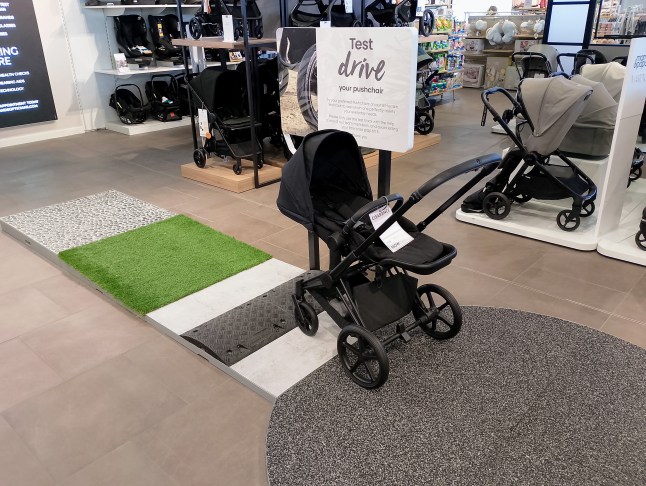
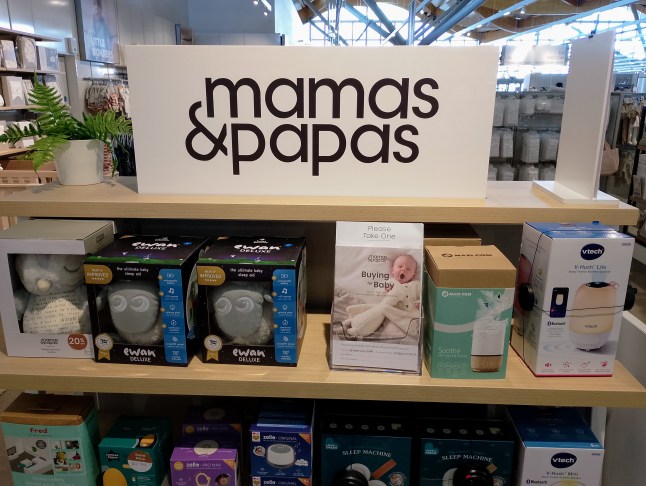
Outside of the Mamas and Papas concession, M&S also has its own extensive baby clothes line at M&S Cheshire Oaks, meaning that the entirety of what I’m terming the ‘north wing’ of the store’s upper level is given over to kids and baby items.
Eating at M&S Cheshire Oaks
After all the shopping, I had built up quite an appetite, so I visited one of the two cafes located on either floor of M&S Cheshire Oaks.
Combined, they reportedly seat a whopping 430 people – a pretty big number considering other M&S cafes are currently shutting their doors.
I went to the top-floor cafe, which is probably the larger of the two and takes up a good portion of what I’m terming the ‘south wing’ of the site… which may not be entirely geographically accurate.
The menu itself looked pretty good – a combination of cafe classics, light lunches and a tempting, tradional all-day breakfast (£9.95).
If that doesn’t hit the spot, then you could opt for the pesto eggs, with haloumi and asparagus (£9.95), a ‘berry bliss’ granola bowl (£4.95) or even pancake stacks (£6.00).

It being the morning, I opted for one of the ciabattas – mature cheddar omelette with tomato and chilli chutney, accompanied by their limited-edition ‘Kenyan blend’ flat white coffee. Perhaps a tad pricey at £6.30, but not too bad, all things considered, and it was actually really tasty.
If I’d stayed for lunch, I could have opted for ‘Gastropub’ fish and chips (£11.95), jacket potatoes (around £6 – £7), a selection of soups (£5.50 – £6.50) or some hot sandwiches (£7.50).
The hot drinks list also had a couple of quirky new offerings that included a Lion’s Mane latte (£4.00), Iced wild strawberry matcha (£4.25), a peaches and cream Iced latte (£4.10), and an Eton Mess milkshake (£4.25).
The fancy tracker system for getting your order to you also struck me as unique, as you’re given a pad upon ordering to place down on any table you like, and your food will be delivered to you: no buzzing, shouting, or holding up numbers.
After some more shopping, it was time to check out what might be a highlight of most trips to a Marks & Spencer: a visit to the food hall.
In all honesty, as first impressions go, the food hall at M&S Cheshire Oaks didn’t strike me as that big.

It’s tough to make estimates, but I’ve definitely been in M&S stores with a food hall of similar or comparable size.
Upon entering, directly to your right is the fresh deli counter, featuring freshly made baguettes, salads, wraps, smoothies, and more. Right next to it, you also have a pretty sizable Mai Sushi concession, with things like Miso Soup (£1.60), Sushi Kits (£4.50) and other Japanese treats.
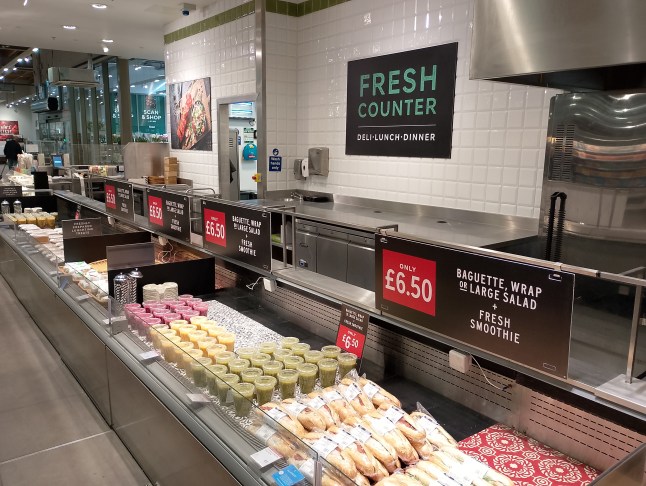
Both of these also feature in other larger M&S stores, but they definitely made for a welcome addition at this one.
Everyone always talks up Lidl’s bakery offering, and justifiably so. However, the bakery at M&S Cheshire Oaks also deserves an honourable mention, with a pretty extensive selection of fresh pastries and breads.
While you had some of the more traditional offerings like pain au chocolat (£1.25), cinnamon buns (£1.85), and chocolate and lemon drizzle muffins (£1.50), some of the more unusual standouts for me included the strawberry merengue cloud (£2), the birthday yumnut (£1.85), and an apricot and madagascan vanilla croissant (£2.65).

What did I buy from the UK’s biggest M&S?
Taking full advantage of the Mamas & Papas sale, I managed to secure a ‘Wildly Adventures’ zero to six months sleep bag (2.5 tog for our winter baby) at the bargain price of £17.50 (50% off its £35 RRP).
While I suspect my little one will grow out of them in about a week (if they even fit at all), I also couldn’t resist a set of the Bear Booties for newborns – just £6, after the 25% sale discount was applied (£8 RRP).

Unable to leave M&S without purchasing something for lunch, I also took advantage of the fresh deli’s ‘lunch deal’ and got myself a Peri Peri chicken wrap with pickle slaw, along with a smoothie made from mango, pineapple, and passionfruit.
While this might not have reached the budgetary heights of when I managed to beat the Tesco Meal Deal, I thought the £6.50 offer was actually quite fair for what I got, which proved really tasty.
Staying true to my ‘picky bits’ claim, I also snapped up a mini grazing snack pack with Napoli salami, cheddar cheese, and mini bruschetta for just £2.60
How to get M&S products for less
After our trip to M&S Cheshire Oaks, I put my local knowledge to use and made the 10-minute walk across to the Cheshire Oaks Designer Outlet to check out what was on offer at the M&S Outlet Store there.
While the selection there is undoubtedly far, far less than its sister store across the road, there were definitely a few bargains to be had at reduced prices.

Some highlights included Slim-fit M&S chinos, which were down from an original price of £35 to just £8.75 and £12 respectively, and shoes priced as low as £20.
Continuing my hunt for baby gear, I managed to snag some adorable, zero-to-three-month-old stripey trousers for just a fiver (RRP £7).
The store also offers ‘not quite perfect’ and ‘clearance cleared up’ items that are sold as seen at a further reduced cost.
Do you have a story to share?
Get in touch by emailing MetroLifestyleTeam@Metro.co.uk.
21 Nov, 2025 | Admin | No Comments
Five fun activities to do this winter from spa breaks to escape rooms

Take the family for a pre-Christmas day out or book a spa break for the new year. Whatever you fancy, there are plenty of ways to do it for less.
21 Nov, 2025 | Admin | No Comments
The no-distraction tablet everyone’s obsessed with is on sale for Black Friday

Metro journalists select and curate the products that feature on our site. If you make a purchase via links on this page we will earn commission – learn more
Do you ever sit down to get things done, only to be instantly derailed by emails, social notifications or the sudden urge to Google literally anything?
And yet, the moment you switch to pen and paper the to-do list disappears into the abyss? Because same.
That’s exactly the problem Magnus Wanberg set out to solve when he created reMarkable back in 2013 – a device that gives you the paper experience you love, without any of the digital distractions you don’t.
Some may liken these devices to an iPad, Kindle or Tablet, but they’re more unique than that. Allowing you to read, write and sketch without distraction, reMarkable boasts a high-friction surface that mimics real paper, allowing you to doodle your ideas down digitally.

Refurbished – reMarkable 2 – Marker Plus – Folio
This refurbished bundle comes with the reMarkable 2, Marker Plus, new Folio and nine marker tips. Allowing you to read, write and sketch without distraction, the reMarkable 2 boasts a high-friction surface that mimics real paper, allowing you to doodle your ideas down digitally. The Marker Plus even has a matte finish and built-in eraser for quick and easy corrections.
Then, the paperless pad’s software turns your handwriting into neatly typed text, saving, syncing and organising your notes so your ideas never go missing again.
That means no more piles of paper notes, lost doodles or coffee stained documents. Hallelujah.
Better yet, this Black Friday, reMarkable has launched its biggest offer with exclusive discounts on new and refurbished device bundles, including the reMarkable 2 and the newer, larger reMarkable Paper Pro, both of which will be reduced by £50.
A quick note: only bundles (not individual items) are discounted, but honestly, the bundles are where the real value is.

Refurbished – reMarkable Paper Pro – Marker – Book Folio (polymer)
This refurbished bundle comes with the reMarkable Paper Pro, Marker, new Book Folio and marker tips. This digital pad is ultra-slim and portable, but with a full-size 11.8” colour display, adjustable reading light, and an unmatched paper-like writing experience.
The reMarkable 2 usually retails for £389 including the marker, while the reMarkable Paper Pro goes for £559. However, the refurbished bundles include more items, and can save you more even without the sale discount, so it’s a no brainer.
For example, the refurbished reMarkable Paper Pro bundle with the marker and book folio will cost £538, which is less than buying a new reMarkable Paper Pro on its own (£559) – and that’s before the £50 discount.
Similarly, the refurbished reMarkable 2 is much more purse-friendly when you shop a refurbished bundle, with the reMarkable 2, Marker Plus and Folio (all refurbished) now coming in at just £329 down from £508.
Long story short: if you want the best value, refurbished bundles = double savings. It’s a no-brainer.
But what’s the difference between the reMarkable Paper Pro and reMarkable 2 we hear you ask?
They both offer the same, paper-like and distraction-free experience, but there are some subtle differences. Firstly, the size. The reMarkable Paper Pro is slightly larger in size than the reMarkable 2, and measures the same size as a piece of A4 paper.
The Paper Pro is also fractionally thicker and weighs slightly more, though both devices weigh under 1kg.
The other difference is the Paper Pro has a colour screen, whereas the reMarkable 2 is black and white and doesn’t feature a reading light.
The rare reMarkable sale will run from 20th November to 2nd December, so there’s plenty of time to grab a bargain – whether you’re snapping something up for yourself or a productivity-obsessed loved one.
We’ve already got one in our basket…
Follow Metro across our social channels, on Facebook, Twitter and Instagram
Share your views in the comments below
20 Nov, 2025 | Admin | No Comments
I spent five months thinking I was going to die — the truth was unbelievable


If you saw her in the street, you’d think Victoria Abotorabi was just a hard-working, happy mum.
A successful recruitment consultant from Leeds — you’d never be able to tell that Victoria was in so much pain she thought she was dying.
But this was Victoria’s reality for months, with the 50-year-old even going as far as penning goodbye letters to her two young daughters Yasmine, 15, and Erin, 10.
Behind closed doors, she was battling seriously debilitating medical issues and doctors couldn’t seem to figure out what was wrong with her.
Now, after finally discovering the truth about her health, Victoria is sharing her story to try and make sure no-one else has to suffer the way she has.

It all started when she began experiencing ‘a dull pain in [her] left ear,’ she shared.
‘I thought it was just an ear infection. The doctor gave me some antibiotics and steroids and told me to take them for three weeks.’
Victoria was put on ciprofloxacin — a drug within a group of antibiotics known as fluoroquinolones that are often used to treat bacterial infections.
She considered it a job done. However, just five days into taking the prescription, Victoria woke up in the middle of the night with heart palpitations, numbness in her hands, and an intense pressure in her head.
The mum-of-two immediately sought medical attention. But she was turned away by her doctor, who told her that the symptoms were linked to the ear infection and advised to continue taking the medication.
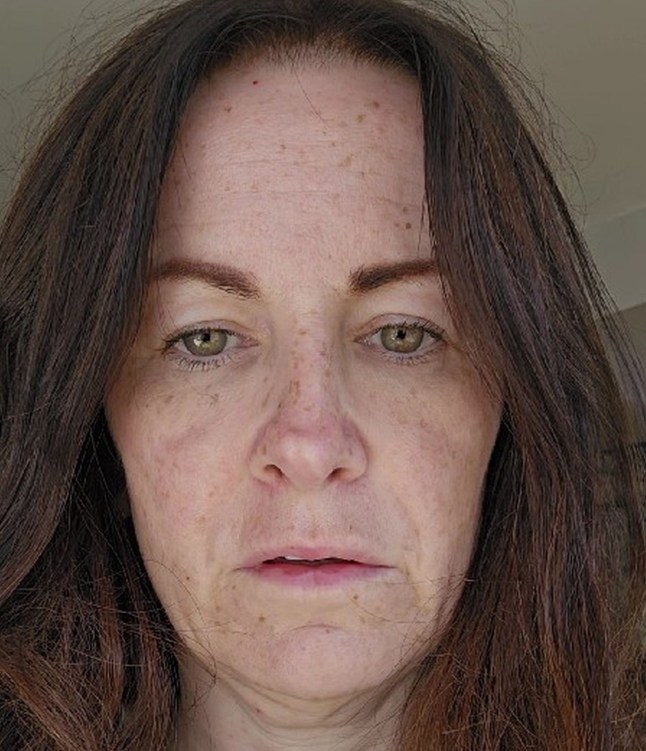
This marked the beginning of a five-month-long journey, that saw her develop a piercing headache that wouldn’t go away, alongside other crippling symptoms.
‘It was awful. I couldn’t even lie my head onto the pillow,’ Victoria recalls.
‘I went on lots of different medications but nothing was working. I had body twitches, muscle spasms, my digestive system shut off, I lost so much weight, I had facial nerve pain.’
‘I was in so much pain I spent days just crying, it was horrific. Medical professionals just kept saying I was anxious and stressed,’ she continued.
‘Nobody knew what was going on, I kept going back to A&E. I thought I was dying, I felt so incredibly poorly.’

It was at this point that she made the deeply difficult decision to write her two children goodbye letters.
‘I wrote letters to my kids saying goodbye, because I thought the doctors had missed something really bad. I thought I was either going to die or I wanted to die. I just couldn’t deal with the pain anymore. It was absolutely unbearable.’
It wasn’t until Victoria’s seventh visit to A&E in November 2024 that a discovery was finally made and Victoria learned the truth about what was going on.
During her appointment, the mum was asked about her recent medication, which ultimately led to the realisation that she’d suffered an adverse reaction to ciprofloxacin.
While it is rare, according to the NHS, in some cases fluoroquinolone antibiotics can cause disabling, long-lasting or permanent side effects affecting the joints, muscles and nervous system.

It cost Victoria £6,000 in private appointment fees to finally reach her diagnosis.
‘There is no cure for this,’ Victoria explains. ‘It’s just whether your body can recover.’
‘If I’d have known, I’d have never taken it. It shouldn’t be given out as a first-line antibiotic. It should be that they’ve tried everything else.’
‘It’s a horrible drug, it’s not worth the risk of taking. It’s not worth the long-term damage.’
As Victoria says, currently ‘there are no pharmacological treatments established to be effective for these disabling and potentially long-lasting or irreversible side effects.’
Government advice actually states that medical professional should not prescribe fluoroquinolones ‘for non-severe or self-limiting infections, or for mild to moderate infections unless other antibiotics that are commonly recommended for these infections are considered inappropriate.’
Understandably, Victoria feels incredibly ‘let down’ by the health service — an industry she previously had ‘complete faith in.’

Shockingly, there are a number of personal testimonies online regarding the debilitating and serious side effects of Ciproflacacin antibiotics.
Reportedly, serious side effects are estimated to occur in at least between 1 and 10 people in every 10,000 who take a fluoroquinolone.
Someone who can relate to Victoria is Nazir Khan — who shared their story on the Mayo Clinic blog forum, stating that after taking this medication for just five days in 2017 for a UTI, their quality of life has been ‘steadily deteriorating.’
‘Over the past seven years, my condition has worsened to the point where I can barely walk, and I will soon need a wheelchair. The best way to describe my current condition is that the soles of my feet are completely numb, with a constant sensation of poor blood circulation, tingling, and severe pain,’ the post read.
For Victoria, her focus is trying to move forward and cope the best way that she can.
‘Looking back to where I was to where I am now, I’ve come a long way. Life is hard still but better than when it was,’ she adds.
Do you have a story to share?
Get in touch by emailing MetroLifestyleTeam@Metro.co.uk.
20 Nov, 2025 | Admin | No Comments
Why everyone’s swapping dermatologist appointments for this £6.99 skin treatment


Metro journalists select and curate the products that feature on our site. If you make a purchase via links on this page we will earn commission – learn more
Real talk – not everyone has the chance to see a dermatologist to address their skin concerns.
The waiting lists are endless, the appointment fees make your eyes water, and even when you finally get in, there’s no guarantee they can solve your skin woes.
But the skin experts at Renew + Me are tackling this issue head on with personalised skincare built by dermatology experts – minus the waiting list and the stress.
The team behind the trusted brand Skin + Me has created prescription-strength formulas specifically for ageing skin but has made them accessible, creating your bespoke skincare solutions delivered to your door.

Renew + Me Nightly-Active-Cream
Renew + Me's standout product is the Nightly-Active-Cream – a potent, bespoke night treatment packed full of prescription-grade actives like retinoids, plus supportive ingredients such as niacinamide, peptides and azelaic acid. They’re clinically proven ingredients in the exact strengths your skin needs. Use code SKINGLOWMETRO at checkout to claim your first month for just £6.99.
How, we hear you ask? Well, the process is simple. You upload a few photos of your face, answer some questions about what’s bothering you, and their dermatology panel gets to work.
From this you get a tailor-made treatment designed around your skin’s current needs.
And here’s the cherry on top: Metro readers can use the discount code SKINGLOWMETRO at checkout to grab their first month for just £6.99 – a whopping saving of 77%.
The cream comes in a clever Daily Doser which dispenses exactly the right amount every night. You don’t have to worry about overdoing it or wasting product. And when the month is up? Your next personalised box lands through your letterbox. Easy.
If your skin changes, just let the team know. Want a stronger dose? Trying to tackle a new concern? They’ll adjust your formula based on your feedback – like having your own personal dermatologist in your pocket.
People are already raving about their results, too. Some report smoother, brighter, calmer skin in as little as twelve weeks, while one reviewer said their skin was ‘glowing’ after just three weeks.
‘I have been using this for 3 weeks now and have no side effects, and my skin is glowing,’ raved the impressed reviewer. ‘Hoping after using it for a further month or 2 my acne pigmentation will start to reduce.’
There’s also the Serum-in-a-Cream, a personalised moisturising treatment for night-time that works on your face, neck and décolletage.
So, if you’re done faffing about with half-effective serums and endless dermatologist delays – this feels like the shortcut your skin’s been begging for.
Follow Metro across our social channels, on Facebook, Twitter and Instagram
Share your views in the comments below
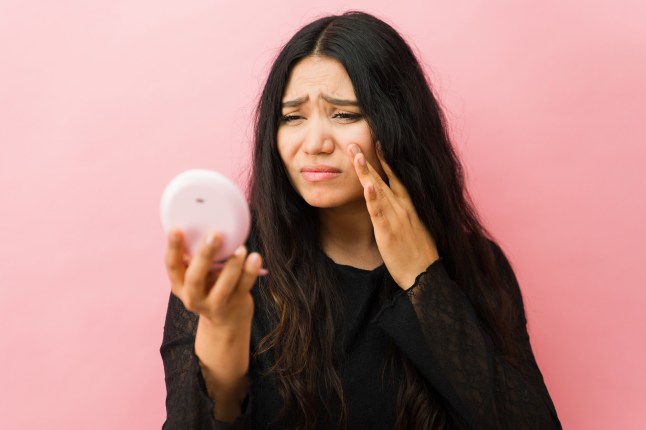
It’s supposed to be the most wonderful time of the year, but apparently my face didn’t get the memo.
That arctic chill in the air is wreaking havoc on my skin, leaving me looking paler than ever (impressive as I was already giving Casper a run for his money), with chapped lips and dry patches.
To make matters worse, my hair is constantly being whipped about by the wind and all of my cosy clothes feel drab and unflattering. I miss my summer dresses and sparkly sandals something chronic.
To sum up: I’ve got a serious case of the winter uglies, and it seems I’m not the only one.

What are the winter uglies?
The ‘winter uglies’ is a term that women have coined online and it’s all to do with the way the gloomy winter months can leave you feeling like you’ve lost your spark, both physically and mentally.
The dark nights and cold weather cause many of us to become a bit of a hermit, staying home, bundling up in Oodies and PJs, forgoing our usual skincare routines and workouts, in favour of binge watching Gilmore Girls for the hundredth time in bed.
Now, there’s absolutely nothing wrong with doing any of that, but for some, it can take a bit of a toll on the way they look and feel.
On Reddit and TikTok, many have shared how they experience everything from break outs and irritation on their cheeks and nose, to frizzy hair, weight gain and watering eyes when they’re ‘trapped in the trenches of the winter uglies’.
All of this combined with the winter blues can make for some pretty low periods.
Sana Khwaja, a BACP-accredited therapist at BetterHelp, says: ‘It’s not surprising to me that a term like “winter uglies” has emerged, as this time of year many will notice thier mood dipping and it’s common to experience a winter slump.’
The expert explains that a big reason for this is because of the lack of sunlight and vitamin D, as this can cause a drop in our serotonin levels, which is a mood-stabilising hormone.
As a result you might find yourself feeling sad, and your sleep can be impacted by this too, leaving you more sluggish, unmotivated andpotentially less confident in how you look.
‘It’s not all in your head – there’s a real biological and psychological compontent,’ Sana assures.
Therapist Danny Greaves previously told Metro, that November and December can also create real ‘challenges’ as people reflect on missed achievements, goals and opportunities from the past year and feel a real sense of loss.
And some will also experience seasonal affective disorder, a clinical form of depression, that can be ‘quite severe’.
So, what can you do to combat this?
We’re sorry to say there’s no magic wand you can wave to deal with all this, but there are plenty of things you can try to feel a bit better in yourself.
For your mental health, if you’re really struggling, the best thing you can do is talk to someone. Consider trying therapy, or reaching out to trusted loved ones for some emotional support.
And Sana says it’s crucial when you’re down to get outside and get your body moving.
She advises: ‘Maintaining gentle routines like exercise or creative activities can also help to mask the negative thoughts related to our appearance and serve as a distraction. Every small step per day can improve mood and confidence, helping you feel more like yourself despite the darker, colder months.
‘And one tip that will never fail is making sure to get outside to capture even brief moments of daylight.’
Focusing on your sleep hygiene (by implementing a consistent routine) and eating well are also really important when you’re not feeling your best.
And social interaction can make a real difference to your wellbeing too – perhaps you can meet up with friends or family members for a walk or coffee, take part in activities you both enjoy, or even just have a catch-up over the phone to help you feel less lonely.
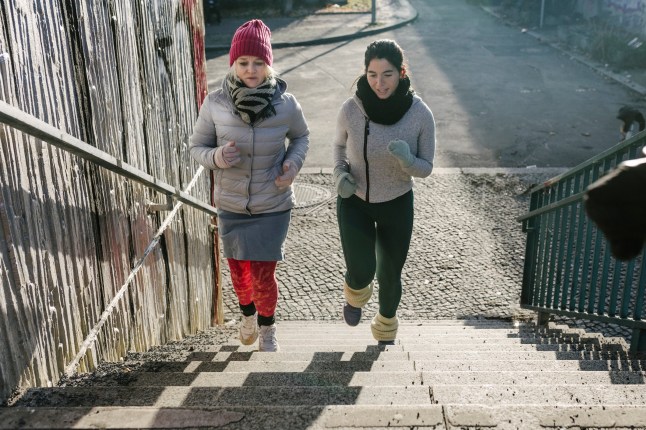
Get your skin glowing again
If it’s dry, irritated skin you’re struggling with amid the cold weather, Dr. Derrick Phillips, a CeraVe consultant dermatologist says there are several things in your home that might be contributing to the issue.
The expert tells Metro: ‘Several factors contribute to the way our skin behaves in colder weather, leading to the sensation of dryness and tightness. The combination of colder temperatures outside and the use of convection heating system indoors, leads to a reduction in air humidity which has a drying effect on the skin.’
He continues to say that taking too many hot showers could also be doing more harm than good, as the heat ‘strips away essential oils from the outer layer of the skin’.
But don’t panic, you don’t suddenly need to switch to cold plunges, just consider turning the temperature down a little so it’s warm instead of scalding, or simply reduce the amount of time you spend in the shower, staying in just as long as you need.
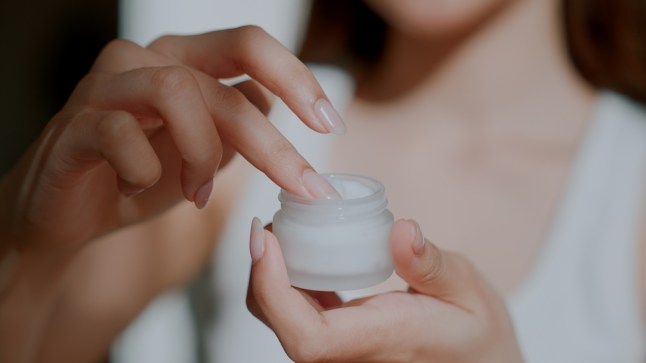
Many of us also experience reduced sebum production during winter, which can lead to a ‘compromised skin barrier’. This loss of moisture causes dryness, irritation and a feeling of tightness.
‘A healthy skin barrier is essential for retaining moisture and protecting against external irritants,’ Dr. Phillips says.
As such, he recommends switching out some of your regular skincare products at this time of year, ditching gel or foaming cleansers for a ‘more hydrating and nourishing’ balm or cream cleanser.
‘It’s also useful to consider transitioning from a lightweight moisturiser to a heavier, more emollient formula,’ he suggests. ‘Look for ingredients like ceramides and essential oils to lock in moisture and prevent water loss.’
And Dr. Phillips warns against exfoliating too much, as this can cause dryness and sensitivity. Instead try exfoliating once a week, or as needed.
The girlies of the internet have you covered as well, as they’ve been sharing their top tips for clawing your way out of the depths of winter uglies so you can feel like the bad b***h you are once more.
On Reddit, u/squeakyfromage shared what they do when they’re struggling, writing: ‘Took a bath with bath oil, let a hair mask sit for an hour then coaed myself with dry oil and moisturiser in an attempt to feel more human.’
Similarly, u/Wonderful-Frosting17 said: ‘Spray tans, tan extenders, and red light therapy are my best friends for winter. I stay glowing.’
And TikToker @lvblackwell agreed that applying fake tan is what makes all the difference for her.
Others suggested starting with actions that will get ‘quick results you can see and feel’, such as treating yourself to a blowout, a mani/pedi or eyebrow threading.
And when it comes to your make-up, many recommended using products like Charlotte Tilbury’s Magic Cream, sparkly eyeshadows, non-drying concealers and glowy or hydrating products instead of matte ones.
Finding things that bring you joy more generally might also help boost your mood. This could be trying new hobbies, dopamine dressing, going out to a place you love or seeing your friends.
Do you have a story to share?
Get in touch by emailing MetroLifestyleTeam@Metro.co.uk.
20 Nov, 2025 | Admin | No Comments
Shoppers are rushing to Coco & Eve’s huge 30% off sale — here’s what to grab first
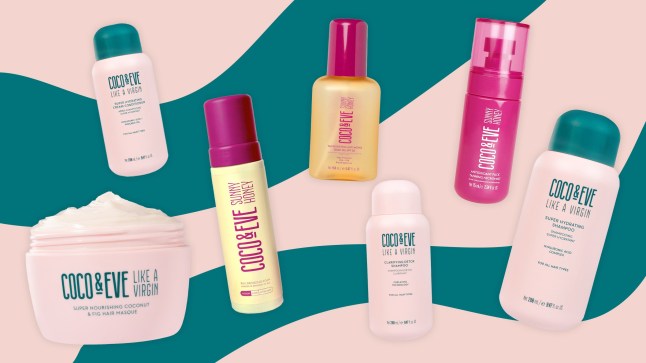
Metro journalists select and curate the products that feature on our site. If you make a purchase via links on this page we will earn commission – learn more
Winter is officially here, and if you’ve been looking to achieve that perfect bronzed, been-in-the-sun-all-day glow despite the cold weather then Coco & Eve has you covered.
The brand, which is known and loved for their haircare, bodycare and fake tan essentials, has slashed the prices of a huge array of best-sellers by up to 30% in their Black Friday sale.
The catch, of course, is that these deals won’t be sticking around for long, so whether you’ve been after an iconic tanning product or want to try out Coco & Eve’s much-loved shampoo and conditioner for less, you’ll have to act fast.
The unmissable sale will see the brand’s Like A Virgin Shampoo and Conditioner Kit, Hair Masque, Sunny Honey Bali Bronzing Foam and multi-purpose Tan Boosting Anti-Ageing Body Oil all reduced by a whopping 30%.
Whether you’re stocking up on your own supplies, looking to trial new products you’ve yet to sample from the brand, or treat a loved one to a bundle of beauty buys this Christmas, the Coco & Eve sale has the answer.
Need a shopping hand? We’ve whittled down our personal favourites in the Coco & Eve sale below.
Coco & Eve Black Friday sale 2025 – top picks
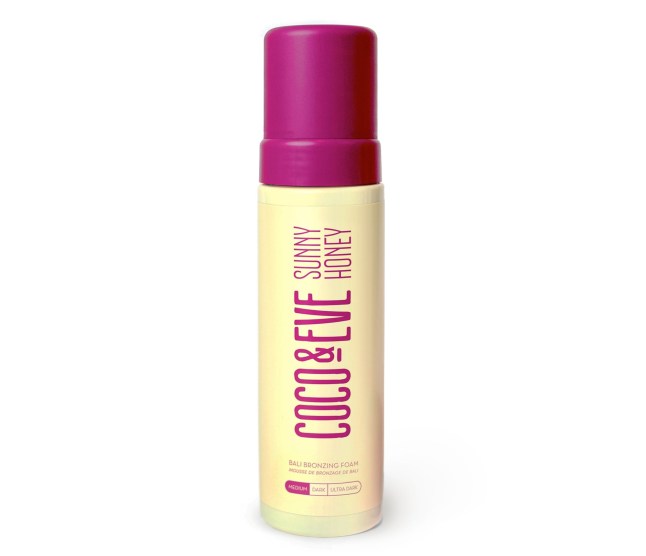
Coco & Eve Sunny Honey Bali Bronzing Foam
This best-selling tanner boasts a lightweight mousse texture that absorbs into the skin effortlessly without leaving any tacky residue. It has been formulated with raw virgin coconuts, botanicals and amino acid, which hydrate the skin and even pigmentation, while natural DHA provides the bronzed finish. This cruelty free and vegan formula can be washed off after two hours to reveal a sunkissed glow.
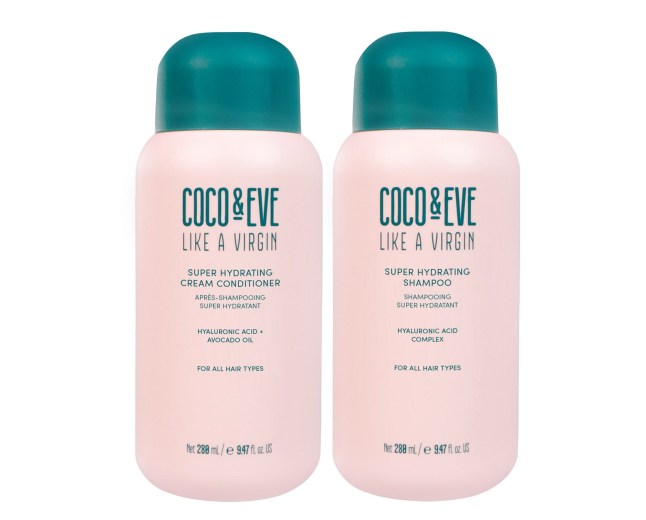
Coco & Eve Like A Virgin Shampoo & Conditioner Kit
If you need to give your dry and damaged hair a hefty dose of hydration, this is the gentle yet nourishing bundle to invest in. The shampoo has been formulated with coconut-based surfactants, fruit enzymes and hyaluronic acid complex that work to cleanse the hair and scalp of dirt and impurities, as well as hydrate your hair without drying out your locks. The conditioner works to soften your tresses as it is also infused with coconut and avocado oil, as well as a hyaluronic acid complex. It’s the perfect pairing you will rely on daily for clean, silky sift and nourished tresses.
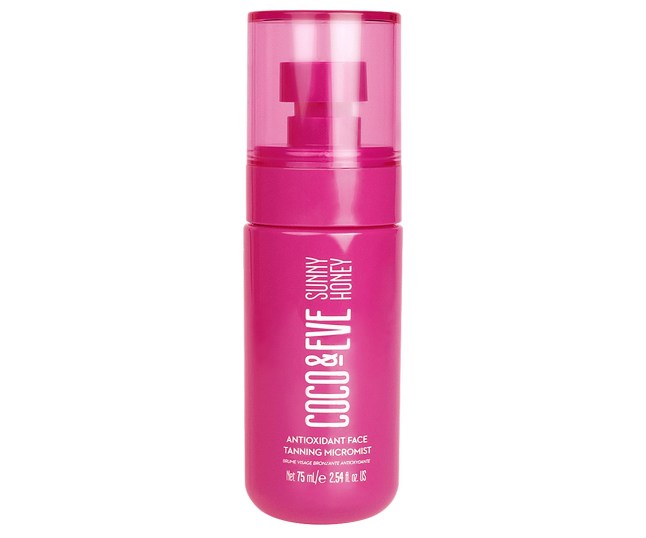
Coco & Eve Antioxidant Face Tanning Micromist
Fake the summer glow in winter with this easy to use fake tan that is sensitive enough to apply on the face. This tanning mist doubles as a fake tan and skincare solution as it boasts an antioxidant complex and a hyaluronic blend which combine to hydrate the skin, boost collagen production and leave your skin glowing.
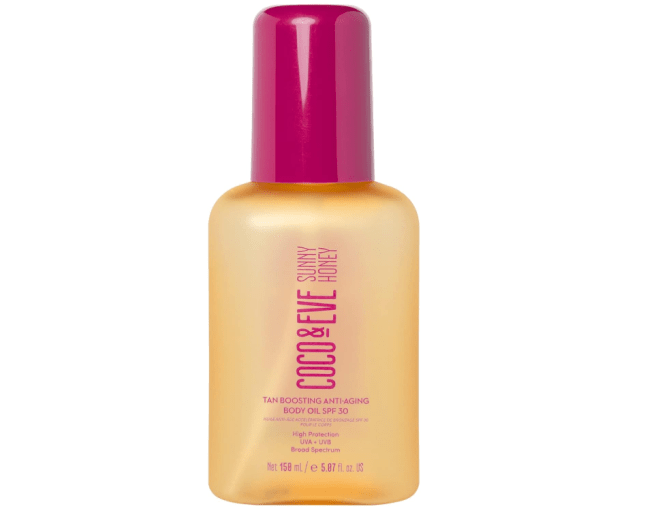
Coco & Eve Tan Boosting Anti-Aging Body Oil SPF30
This multi-functional skincare product is one you never knew you needed, but will never be without. This lightweight oil not only hydrates the skin, plumps and combats the signs of ageing, but it also provides UV protection when out in the sunshine. It also accelerates your tan, so you can be out in the sunshine for less time.
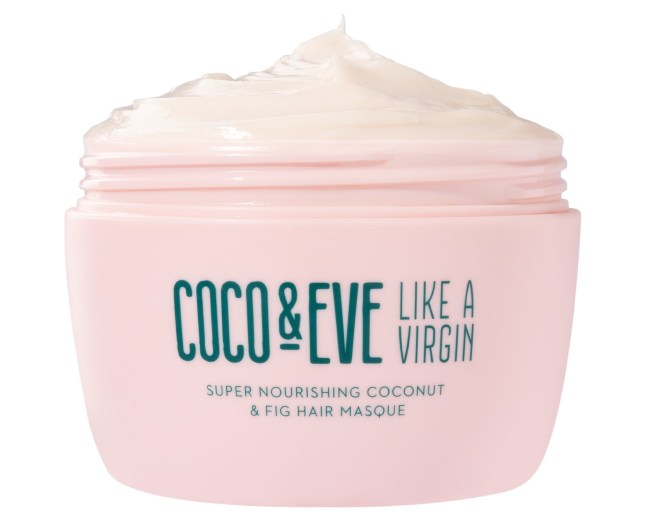
Coco & Eve Like a Virgin Hair Masque
While we love the shampoo and conditioner set mentioned above, sometimes your hair needs a little extra TLC, which this delivers. The mask can be applied on damp or dry hair and left to marinate for a few hours before you wash it out. This will target those dry and brittle ends, hydrate your locks and boost your hair's shine.
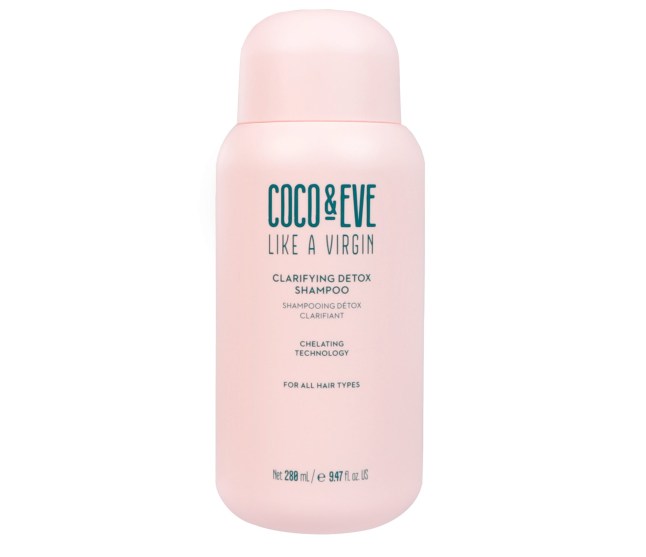
Coco and Eve Clarifying Detox Shampoo
Ever find your hair feels sore and tender when it hasn’t been washed or it’s been scraped back for days? The Clarifying Detox Shampoo can help. This formula contains 3D chelating technology, which works to remove heavy metals carried in hard water, as well as dirt, grime and sebum from your hair. While this shampoo cleanses your hair, it also protects against environmental aggressors too. Your hair will feel ultra clean and silky soft after use.
Winter never looked so bronzed and glowy…
Follow Metro across our social channels, on Facebook, Twitter and Instagram
Share your views in the comments below
20 Nov, 2025 | Admin | No Comments
‘Devastating’ pictures show aftermath of infection that left woman a quadruple amputee


When Jane Haley took a course of antibiotics for her strep throat in June, she quickly started feeling back to her normal self.
The 41-year-old had no idea that, just two months later on August 24, she would be rushed to hospital in an ambulance where doctors would diagnose her with Toxic Shock Syndrome – a rare form of sepsis.
Ultimately, doctors would have to amputate all four of her limbs to save her life from the tissue damage, and keep her from multi-organ failure.
Pictures reveal the severe damage to her legs and arms from the Group A Streptococcus infection which spiralled out of control, as Jane thinks back to how her journey started.
‘In June I took a full course of antibiotics for seven to 10 days and I was feeling better by then,’ Jane, an accountant, recalls.
‘Towards the end of August I started to have pain in my jaw and cheek and then in the left side of my neck. I thought it was just my glands swelling up to take care of an infection or whatever was happening in my jaw.’

But after calling a medical advice helpline and explaining her symptoms, Jane, from Grande Prairie, Alberta, was rushed to hospital in an ambulance.
‘That was the last thing I remember,’ she says. ‘One minute I was fine and the next minute I wasn’t fine and I was rushed to ICU.’
Her blood pressure and heart rate dramatically dropped and she was placed into a medically induced coma, which allowed doctors to diagnose her with Group A Streptococcus, which had progressed into Toxic Shock Syndrome.
Group A Streptococcus and Toxic Shock Syndrome
Group A strep is a common bacteria that lots of us carry in our throats and on our skin. It doesn’t always cause illness, but it is linked to infections like; strep throat; pneumonia; sinusitis; necrotising fasciitis; and toxic shock syndrome.
You’ll only get infections like toxic shock syndrome and necrotising fasciitis if the bacteria enters your body and blood stream.
The common symptoms include pain in the affected area, redness, and swelling. If the infection progresses or is a systemic infection, such as scarlet fever or toxic shock syndrome, you would develop fever, muscle aches, and flu-like symptoms.
You develop toxic shock when the bacteria releases certain toxins into the body, and symptoms can come on quickly.
Treatments can include:
- antibiotics
- fluids to rehydrate you
- medicine to control your blood pressure
- oxygen
- and surgery to remove infection from cuts or wounds
Source: NHS and Sepsis Alliance
As her condition worsened, her hands and feet began to go black from the tissue damage, and doctors told her she would lose all four limbs – a sad reality for Jane, who loved sports.
She had always been drawn to the outdoors and adventure, often hiking, rollerblading and paddleboarding, but now she can’t partake in any of the activities she loves.
‘It was either save my life or save my limbs and the doctors chose to save my life,’ she explains. ‘I’m happy that they made this decision as I’m still here to talk about it today.’
That doesn’t mean it was easy for Jane to come to terms with, though. ‘It was devastating at the time to see my hands,’ she adds. ‘My feet hadn’t changed colour at the time so I had a bit of hope that I would still walk.
‘It took only two weeks for my hands to look how they looked in the photos, it happened rapidly.’

Just over a month after arriving at hospital, on September 29, Jane was airlifted to a second hospital, where she underwent her double hand amputation on October 1.
A week-and-a-half later she had her legs amputated below the knee, and then went in for a third surgery a week later to restore the nerve connections to her muscles.
‘I was desperate to go [for the amputation] as by the time this came around I was in so much pain,’ Jane says.
‘It was disgusting that the bottom of my foot was black and it looked almost like an insole. The dead skin was separating from the old skin, the pain was constant.
‘It started out as a little crater [on my foot] and this got bigger and bigger [until the dead skin] could flap at me when I flexed my foot. It was so extremely painful that I thought anything had to be better than this. I was ready to go and get this amputated.’
Now, Jane is in a rehabilitation facility in Edmonton to begin her long road to recovery where she will receive physical and mental health therapy.
In the future, with the help of prosthetics, she hopes to drive, run and swim again, but sadly says her days of climbing mountains are over.
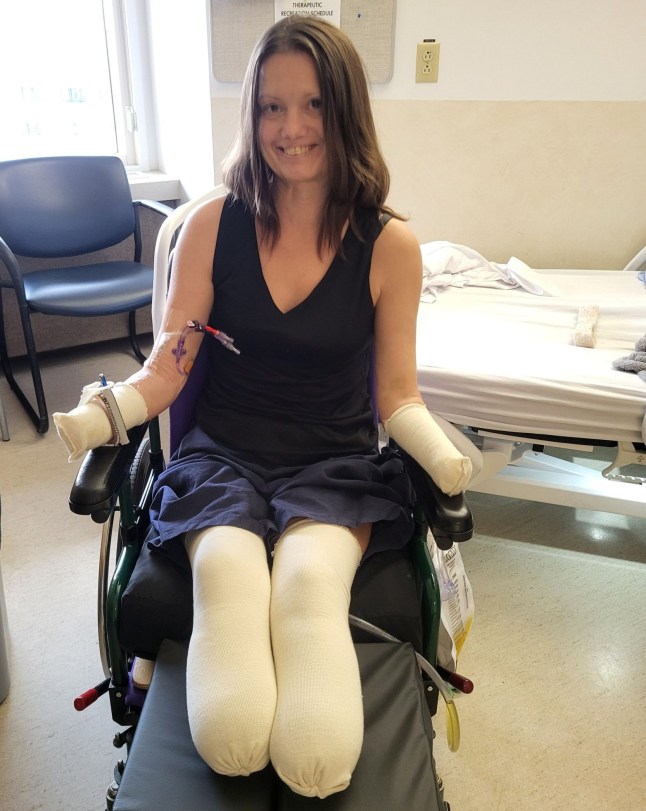
To help with her recovery, a family member has set up a GoFundMe page to raise funds for her rehabilitation expenses.
Jane is now raising awareness of how serious her infection turned out to be as she claims it ‘could have happened to anyone’.
‘All I’m doing now is I’m in survival mode and I’m looking forward [to my future],’ she admits. ‘I’m happy to be living each day and approaching things that people take for granted every day.
‘I’ve had several moments where I’ve broken down but I think for the most part I am a strong person. I don’t like to look back and say “what if?”
‘If I put myself in this mindset it brings down my whole day.’
Jane thinks most people aren’t aware of Strep and how ‘scary’ septic shock is.
‘This could have happened to anyone and it’s a silent killer. It’s a miracle I was on the way to the hospital, as this could have happened at home,’ she adds.
‘I want people to be more aware of what this is and how serious it can be. If this reaches out to people and even saves just one life, it’s worth it.’
Do you have a story to share?
Get in touch by emailing MetroLifestyleTeam@Metro.co.uk.
20 Nov, 2025 | Admin | No Comments
How to handle Black Friday like a pro: 10 tips to make your spending count


Metro journalists select and curate the products that feature on our site. If you make a purchase via links on this page we will earn commission – learn more
Black Friday is almost upon us (and in fact, in several instances, already is). With it comes the prospect of buying more for less – at a time of year when we’re all gearing up for the Big Christmas Spend.
It’s understandable that we are going to find many a tempting deal.
But I, among many others, have learnt that buyer’s remorse is a dreadful thing – so before you get carried away by the ‘best deals ever’, pause a moment.
Take the time to consider the rules of engagement, so you can bask in the warmth of a bargain while safely avoiding the dangers of overspending,

Rule 1: shop with intent
The easiest way to overspend, or buy things you really don’t want or need, is to doomscroll for deals. This is where you’ll endlessly browse through offer after offer on websites, without any real idea of what you’re after.
It’s easy to do, and I’ve been guilty of this myself in the past. But there’s a way to avoid it: shop with intent.
This simply means only going to shops or websites for the item you already know you want. To do this you’ll need to do a little planning.
I tend to make a list in my phone’s notes when anything comes up that I think I need and use this as the basis for a little research.
You can think a little outside the box here, too. Black Friday isn’t just a time to buy gifts or white goods. In years gone by I’ve got low prices on cinema memberships, craft beer, flights, gig tickets, restaurants and broadband. Think too about everyday purchases, especially cosmetics and groceries that you can stock up on if you find decent prices – this is where I tend to do a lot of my Black Friday spending.
Rule 2: benchmark

Sadly, just writing down that you need a new coat or air fryer isn’t going to help you shop with intent. Ideally you want to know the make and model you want and then get a rough idea of what a good price is.
I use price history websites to get an idea of both the going price and the lowest price. These benchmarks help sort the good from the bad when the deals start flying around.
This really is key to getting a bargain and avoiding temptation based on the size of the discount. Instead you can focus on the selling price itself.
For Amazon, use the website uk.camelcamelcamel.com, while PriceSpy is your best bet for other retailers, such as Argos and Currys.
Rule 3: only spend what you can afford
If you follow my advice so far then you’ll hopefully avoid impulse spending (one of the big ways to overspend), but it’s still very easy to break your budget, especially with Christmas pressures.

But going into the red on your current account, relying on Buy Now, Pay Later or deferring payment via credit cards on non-essentials will just cause you problems in the new year.
So work out before you start shopping exactly how much money you have available to spend – and stick to that limit.
I’d also keep a bit of a buffer available if you can, for any surprise offers you hadn’t anticipated, but are things you want and need, such as the aforementioned everyday groceries and services.
Rule 4: find extra cash
Rather than borrow, you’ve still got time before the sales begin to boost your coffers, or at least set in motion some extra cash arriving to offset your spending.
Bank switches are one way to get free money, with a number of banks offering around £200 right now (find all the latest offers at becleverwithyourcash.com/banks).
Check any old accounts that could have a balance you can cash in, from loyalty schemes such as Nectar and Clubcard, through to cashback sites such as Quidco and TopCashback.
You should also check old utility providers, particularly energy firms, who could be sitting on refunds that haven’t been issued.
Rule 5: stop spending (for now)
Though we’re already seeing many retailers launch their Black Friday offers, in most cases the lowest prices are going to happen on Black Friday itself. This means I try to avoid spending any cash in early and mid-November.

There are exceptions. As much of Black Friday is about clearance, it could be the stock goes before we even reach November 28. So if you’re worried about missing out completely (on something on your list, of course), then snapping it up now isn’t a bad move.
I’ve just got some reduced-to-clear slipper-socks from John Lewis that would definitely have been gone in a week.
Rule 6: unsubscribe
Despite your best plans, you can still get waylaid by emails and adverts bombarding your inbox and feeds. These bring that temptation to stray from your list, which in turn means you spend more than planned.
If this is a concern, then unsubscribe from any email and unfollow any account that you don’t intend to shop with.
However, for brands you are planning to spend with, then an email is a good way to keep informed of offers or extra savings.
You can also set price alerts with PriceSpy, Idealo and others to find out when the item you’re after has hit your desired price.
Rule 7: find the lowest price
Once you’re ready to start shopping, don’t just assume the first price you see is going to be the best one. Compare against other retailers but remember to factor in extras such as delivery costs and guarantees. It could be worth paying a few quid more to get these. And you can take it a step further with price matching. John Lewis is the most famous shop to do this, but others include AO, Halfords and All Beauty.
You’re normally limited to making a claim in just seven days after purchase and they’ll usually only match certain retailers but it can pay to go with one of these shops in the first place.
Alternatively, others such as Argos and Amazon will usually promise to refund the difference if they lower prices on things you’ve already bought before Black Friday.

Rule 8: stack savings
The discount from the retailer isn’t the only way to pay less. You can earn money back on your spending if you use a specialist card such as one from Trading 212 or American Express rather than your everyday debit or credit card.
Combine this with voucher codes or cashback sites to bring the price down even further. Look out too for short-term flash bonuses. These can run all year but there are always more on Black Friday weekend itself.
For example, last year I stacked Boots’ Black Friday offers with a £15 voucher from Vouchercodes for spending £50, and received a £20 bonus cashback from Quidco for spending £100 at Argos.
Rule 9: return
Once the frenzy is over, if you do find you’ve overspent, don’t despair. You can still send online purchases back for a refund as long as they’ve not been customised or are perishable.
What you do need to be careful of are return fees. Research for Be Clever With Your Cash found one in three shoppers did not check whether these were free before making a purchase, and as a result one in five lost money.
This is where shopping around and price-matching in advance can really pay off. If prices are the same, go with the retailer that will let you send things back for nothing.
You should be checking high-street stores too, as there’s no legal right to return anything, unless it’s faulty.
That means some will only give you a credit note, or could refuse any form of refund.
Rule 10: wait

Finally, remember that Black Friday isn’t the only sale before Christmas, let alone all year.
You will have other opportunities to buy the items on your list at low, if not lower, prices. So if you don’t actually need it right now and either your budget is too tight or the prices too high, just hold off for a bit.
Two items on my list are a parasol base and a hose – not typical winter purchases! I’m hoping the non-seasonality for them will help me get clearance items, but equally it could already be too late. If that’s the case, I’ll just get these next year.
Andy Webb is the founder and head of money site Be Clever With Your Cash, becleverwithyourcash.com
20 Nov, 2025 | Admin | No Comments
The fitness tracker LeBron and Ronaldo swear is on sale with £60 off for Black Friday

Metro journalists select and curate the products that feature on our site. If you make a purchase via links on this page we will earn commission – learn more
You might think you know your body inside out, but fitness trackers can reveal things you’d never notice on your own.
From ECG heart readings and sleep cycles to stress levels and calories burned, a really good tracker can be a game-changer for your health and fitness. Leading the charge? WHOOP.
Already impressing the likes of LeBron James and Cristiano Ronaldo, WHOOP is changing the game with its screenless, super-sleek wearable design.
Perfect if you’re looking to streamline your fitness, upgrade your training or simply keep a close eye on your health, WHOOP gives you incredible insights on your wrist, performing far beyond standard trackers.
Even better, you can currently knock £40 off annual WHOOP Peak memberships and £60 off yearly WHOOP Life memberships for Black Friday, making this the perfect moment to level up your health.
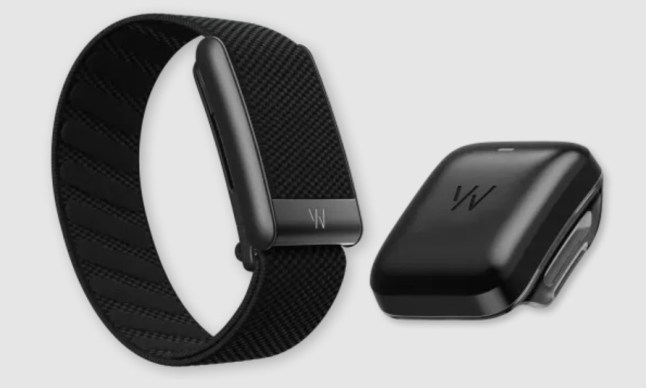
WHOOP – Peak membership
WHOOP Peak is usually £229 per year (currently £189), and includes the 5.0 Device, Wireless PowerPack and SuperKnit Obsidian Band. Boasting 14 days of battery life, steps and activity monitoring, health age, stress and health monitoring and more, this membership has all your insights covered.
This year, WHOOP launched two major upgrades: the WHOOP 5.0 and the WHOOP MG. These wearables go far beyond basic activity tracking and can even estimate your ‘WHOOP Age’ revealing how fast you’re aging on the inside.
Not always flattering, sure, but incredibly useful if you want to improve your long-term health.
Both of the new devices offer an impressive 14-day battery life and can even be worn while charging, so your data collection never takes a break.
Sleek and screenless, these clever trackers gather insights quietly in the background, free from annoying notifications, and deliver personalised breakdowns that genuinely feel tailored to you all through the app.
WHOOP offers three memberships to suit different goals and budgets. The most basic is ONE, starting at £169 per year and including personalised coaching and women’s hormonal insights.
PEAK is usually £229 per year (currently £189), and it estimates your health age and offers real-time stress insights. LIFE, usually £349 per year (currently £289), unlocks daily blood pressure estimates, irregular heart rhythm notifications and essentially medical-grade health and performance insights.
One of WHOOP’s most unique features is its versatility. You don’t have to wear it on your wrist, as the sensor can slip into WHOOP-enabled accessories like chest straps, and clothing such as boxers, bralettes, thongs and training shorts.
If you do want to wear on your wrist, the bands can be super luxurious, crafted from durable silicone to premium leather.
If you’ve been considering a fitness tracker, the glowing reviews for WHOOP speak for themselves. And with such a jammy discount, it seems like the perfect time to make that leap.
Follow Metro across our social channels, on Facebook, Twitter and Instagram
Share your views in the comments below

